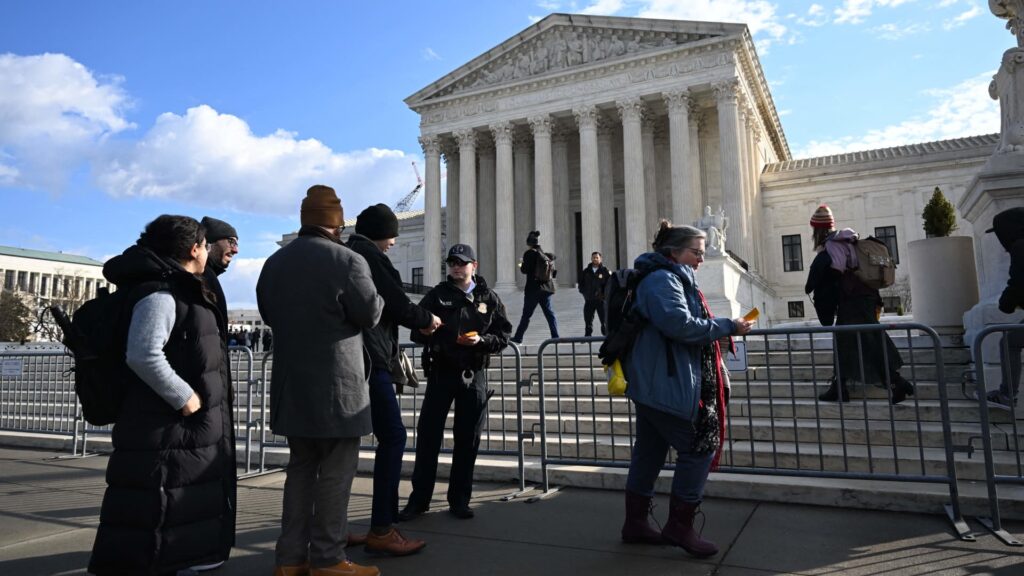People wait in line outside the US Supreme Court in Washington, DC, on February 21, 2023 to hear oral arguments in two cases that test Section 230, the law that provides tech companies a legal shield over what their users post online.
Jim Watson | AFP | Getty Images
Supreme Court Justices voiced hesitation on Tuesday about upending a key legal shield that protects tech companies from liability for their users’ posts, and for how the companies moderate messages on their sites.
Justices across the ideological spectrum expressed concern with breaking the delicate balance set by Section 230 of the Communications Decency Act as they rule on the pivotal case, Gonzalez v. Google, even as some suggested a narrower reading of the liability shield could sometimes make sense.
The current case was brought by the family of an American killed in a 2015 terrorist attack in Paris. The petitioners argue that Google, through its subsidiary YouTube, violated the Anti-Terrorism Act by aiding and abetting ISIS, as it promoted the group’s videos through its recommendation algorithm. Lower courts sided with Google, saying Section 230 protects the company from being held liable for third-party content posted on its service.
The petitioners contend that YouTube’s recommendations actually constitute the company’s own speech, which would fall outside the bounds of the liability shield.
But the justices struggled to understand where the petitioner’s counsel, Eric Schnapper, was drawing the line on what counts as content created by YouTube itself.
Conservative Justice Samuel Alito at one point said he was “completely confused” by the distinction Schnapper tried to draw between YouTube’s own speech and that of a third party.
Schnapper repeatedly pointed to the thumbnail image YouTube shows users to display what video is coming up next, or is suggested based on their views. He said that thumbnail was a joint creation between YouTube and the third party that posted the video, in this case ISIS,…
Read the full article here





